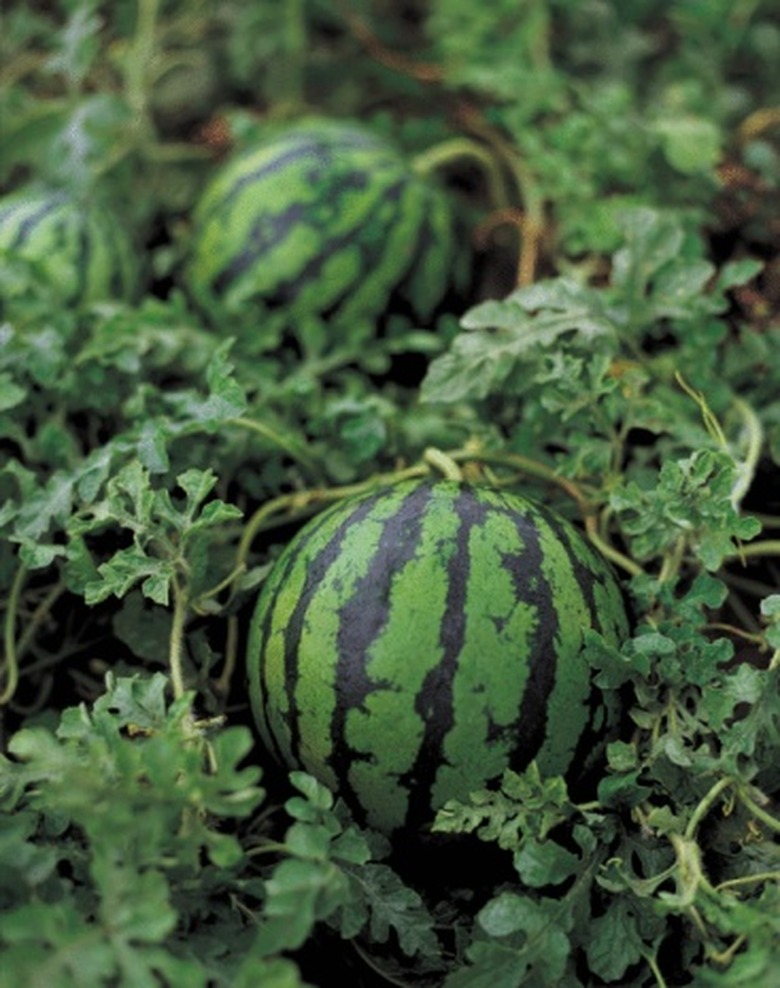How To Grow Watermelon In Zone 6
Things Needed
- Shovel
- Trowel
- Hoe, if desired
Watermelon on the Fourth of July is about as American as apple pie, but the fruit actually originated in Africa, the University of Arkansas Extension reports. Today, the melons — a warm-season crop — grow commercially and in backyard gardens in many parts of the United States. The warm summers in zone 6 — which includes much of Kentucky and Tennessee as well as portions of Kansas, Arkansas, Missouri, Illinois, Indiana, Ohio, Pennsylvania and West Virginia — are suitable for growing watermelons.
Step 1
Create soil hills in your garden space by piling soil in mounds. If you intend to plant several watermelons, set the hills 6 feet apart, the University of Arkansas Extension advises. Plant rows of watermelons 7 feet to 10 feet apart.
Step 2
Plant several watermelon seeds 1/2 inch deep in the hills, covering them carefully with soil. Watermelons should be planted when the threat of frost has passed and the soil has warmed. In zone 6, this generally occurs in the middle of May.
Step 3
Water the plants carefully at planting time so that they can begin to establish their roots. Continue watering as necessary during the growing season so the soil does not dry out. In general, watering is only required during extended dry periods because the plants have a deep root system that can meet their moisture needs.
Step 4
Remove the smallest young plants after they sprout through the soil, leaving only two to three seedlings in each hill. It's always best to keep the largest, most healthy-looking plants and thin out the small or weak plants.
Step 5
Weed the garden space regularly, either by hand or with a hoe. Weeding is especially important early in the season, when the plants are setting their roots.
Step 6
Monitor the plants for signs the melons are ripe starting about 80 days after you planted them. Gardeners often have difficulty determining when to harvest watermelons, but there are several signs to watch for. First, a ripe watermelon will have a dull green color. The tendrils will turn from green to brown and the spot where the melon sits on the ground will turn from green to yellow.
Tip
You can start watermelon seeds indoors three weeks before you intend to transplant them outside. Insert several seeds into a peat pot or seed-starting pot and then thin them to two to three plants per pot. Don't allow the plants to get too big indoors because large plants do not tolerate transplanting very well, the University of Arkansas Extension reports. If you plant seedless watermelons, remember that you also must grow some seeded melons to help pollinate the plants. The University of Arkansas Extension recommends planting one row of seeded watermelons for every three rows of seedless melons.
